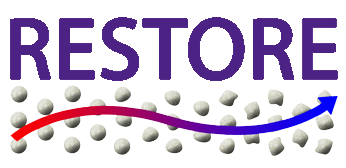Performance of Green Roofs
Background
Green roofs are roofs of buildings which are partially or completely covered with vegetation. Green roofs have a number of environmental and financial benefits including: mitigation of the urban heat island effect, attenuation of stormwater run-off, improved energy budget for the building, prolonged roof life, improved building aesthetics and potential recreational spaces. During storm events conventional roofs drain stormwater immediately while green roofs absorb some water in their soil medium. Some rainwater will drain from green roofs while the rest slowly evaporatranspires after storm events. Stormwater attenuation provided by green roofs helps reduce the stress on urban stormwater systems which can become overwhelmed during big storms resulting in flash flooding. Stormwater runoff also carries many pollutants from cities into urban and rural water bodies. Green roofs help to filter the pollutants out of stormwater and moderate the temperature of stormwater runoff as well.


Project Objectives
- Assess the hydrological performance of green roofs including their ability of green roofs to attenuate and delay stormwater runoff in multiple climate regions across Canada
- Develop urban scale models of green roofs in Canadian climates
Research Methods
Field Experiements
Three replicate instrumented experimental green roofs were installed in August 2012 in three Canadian cities: Calgary (cold winters, hot and dry summers, low precipitation), London (intermediate winters, hot, humid summers, intermediate precipitation) and Halifax (mild winters, cool summers, high precipitation). At each location data was collected continuously from instruments measuring key variables required to determine the Water and Energy balances of the green roof. This in turn allowed us to assess performance in terms of storm water management and urban heat island mitigation. Each green roof is configured into an array with sedum, grass, and aquilegia plant types. This research will help assess the viability of green roofs as a form of Low Impact Development in North American cities.
Project Output
Journal Papers
Sims, D., C.E. Robinson, C. Smart, D.M. O’Carroll, 2019. Mechanisms controlling green roof peak flow rate attenuation, Journal of Hydrology, 123972, doi:10.1016/j.jhydrol.2019.123972.
Sims, D., C. Robinson, C. Smart, J. Voogt, G. Hay, J. Lundholm, B. Powers, D.M. O’Carroll, 2016. Retention performance of green roofs in three different Canadian climate regions, Journal of Hydrology, 542, 115-124, doi: 10.1016/j.jhydrol.2016.08.055.
Tran S., J. Lundholm, Staniec, C.E. Robinson, C.S. Smart, J.A. Voogt, D.M. O'Carroll, Lundholm, J. 2018. Plant survival and growth on extensive green roofs: a distributed experiment in three climate regions, Ecological Engineering, 127, 494-503, doi: 10.1016/j.ecoleng.2018.09.027.
Theses
Sims, D., 2015, Stormwater management performance of green roofs, Master of Engineering Science, Civil and Environmental Engineering, University of Western Ontario, Available at: https://ir.lib.uwo.ca/etd/2854/.
Sia, M., 2016, Evapotranspiration from extensive green roofs: influence of climatological conditions, vegetation type and substrate depth, Master of Engineering Science, Civil and Environmental Engineering, University of Western Ontario, Available at: https://ir.lib.uwo.ca/etd/4139/.
Perelli, G., 2014. Characterization of the green roof growth media, Master of Engineering Science, Civil and Environmental Engineering, University of Western Ontario, Available at: https://ir.lib.uwo.ca/etd/2205/.
Kurukulaarachchi, D., 2016. Temporal variability in the daytime green roof energy balance during dry periods, Master of Science, Geography, University of Western Ontario, Available at: https://ir.lib.uwo.ca/etd/4766/.
Tran, S., 2017. Climate and plant traits as influences on green roof performance, Master of Science, Applied Science, Saint Mary’s University, Available at: http://library2.smu.ca/bitstream/handle/01/27179/Tran_Stephanie_MASTERS_2017.pdf?sequence=1&isAllowed=y.
Project Team
Project Leaders:
Denis O’Carroll (University of New South Wales)
Jamie Voogt (Geography, University of Western Ontario)
Chris Smart (Geography, University of Western Ontario)
Jeremy Lundholm (St Mary’s University)
Brent Sleep (University of Toronto)
Project Members:
Andrew Sims, MESc (graduated 2015)
Maria Sia, MESc (graduated 2016)
Stephanie Tran, MSc (graduated 2017)
Dimuth Kurukula, MSc (graduated 2016)
Alireza Talebi, PhD (graduated 2019)
Maja Staniec, Post Doctoral Associate
Supporting Organizations:







